Just painted kitchen cabinets, now the paint is easily peeling.
My kitchen cabinets had a natural, grainy wood finish. They were from around 1980 and they had a very natural, minimally stained finish. Well to update the kitchen, I recently painted the cabinets bright white, and they look fantastic. :-)
The problem is, I did not sand or prime the cabinets before I started painting. I worked very, very hard, taking all the cabinets off, removing the hinges, putting 3-4 coats on both sides of the cabinets and the frames. spray painting the hinges, reattaching the cabinets, and installing new knobs. I am exhausted from this job.
Now I discover that the paint gets knicked easily and when it does it peels and separates very easily from the wood. I am so annoyed by this, and of course mainly annoyed with myself for not realizing how important sanding and priming are to a job like this. I always cynically thought those extra steps were kind of unnecessary, just a silly ploy for hardware stores to 'upsell' and make people buy more products. But my easily peeling paint makes me think my mistake was not sanding & priming...
I just used regular wall paint for this job, in 'satin' or semi-gloss.'
I'm really upset. I am here to ask what I can do to help reinforce the paint on the cabinets, how I can make the paint less vulnerable to knicks and peeling. Stripping the paint off and starting from scratch is not an option. I am worried because I will be selling this condo soon and the new owner's fingernail is going to come into contact with the paint when they go to pull the knob, and it's going to slice a big chunk of paint right off. Ugh...Surely there is some product or method (maybe applying heat from a blow drier??) that I can do to help the paint harden and adhere, or at least be less vulnerable at the surface?
Your advice, insight, and help would be much appreciated.
Comments (52)
iris_bulb
Original Author10 years agoHi guys, thanks for your responses.
Bullydosmom: The paint is from Ace Hardware, it's Clark & Kensington Premium Interior Semi-Gloss Enamel. It doesn't literally say 'wall paint' on the gallon can, but it is the default type of paint that they sell at Ace. I don't know if I used the wrong type of paint, but I do know that this paint does not specifically say its for 'trim, doors, and cabinets.'
I'm so frustrated, I guess I'm likely going to have to strip all the paint off and totally start over with sanding and a diff. kind of paint. :-(
I refuse to sell this condo with cabinets that look gorgeous but are not durable with a low quality finish.Graywings: I have 12 cabinets and six drawers.
This post was edited by iris_bulb on Tue, Jul 2, 13 at 22:39
paintguy22
10 years agoYea, there is no easy fix. Anything you put on top of the failing paint will not solve the fact that the first coat is the problem. That initial layer is not stuck, and if that isn't adhered, adding additional layers of paint or primers will accomplish nothing. I don't think your chosen finish was the problem either. If you skip sanding and apply primer, then you have a chance for the primer to stick, but if you skip sanding and priming....
Maybe it would be easier to just go buy 12 new doors.
Related Professionals
Monterey Paint & Wall Coverings · Hutto Painters · Marlton Painters · East Renton Highlands Painters · Fox Lake Painters · Reedley Painters · San Antonio Painters · Santa Clarita Painters · Sarasota Painters · Highland Village Cabinets & Cabinetry · Lakeside Cabinets & Cabinetry · Alpine Flooring Contractors · Avondale Flooring Contractors · River Edge Flooring Contractors · Salem Flooring ContractorsLori A. Sawaya
10 years agoI always cynically thought those extra steps were kind of unnecessary, just a silly ploy for hardware stores to 'upsell' and make people buy more products. But my easily peeling paint makes me think my mistake was not sanding & priming...
First, so sorry this has happened.
We talk a lot about priming, the right primer for the right job, sanding and prepping in general.
Primer and prep are no joke.
I agree with paintguy. What's done is done and recovery from incorrect prep is not going to be fast, cheap or easy.
You've all probably read this advice a million times but I'll post it again:
* paint and primer are not the same thing
* proper prep is the majority of any paint job
* if you've read how someone else cut corners and got away with it, you should assume if you try the same you're gonna crash and burnChristopher Nelson Wallcovering and Painting
10 years agopaintguy and fun have said it all, you need to either replace them, or strip them and start over, no other options.period
geoffrey_b
10 years agoAlso, someone could have used Pledge, or wax on the cabinets - paint won't stick to wax.
There are places that strip (dip) furniture. Get the doors / drawers stripped. Then you can sand, apply the correct primer and enamel.
Remove the paint from the cabinet body with Zip Strip (methyl chloride) - use in a well ventilated area.
When the enamel is dry, you could coat them with clear, acrylic polurathane - it's non-yellowing and tough.
graywings123
10 years agoI may be wrong about this, but I think the strip-dip places are a thing of the past.
If I were you, I don't think I would have the perseverance to strip and repaint the cabinets. I would be looking at replacing them.
If you decide to strip them, I would get a few gallons of Smart Strip and rolls of Saran Wrap. You heavily paint on the Smart Strip, cover with strips of Saran Wrap, wait a couple days and scrape the paint off.
sirienne
10 years agoIt's nice of you that you're not going to just let the new owners deal with it... When I bought my townhouse, all the trim downstairs was painted an awful shade of green, and to add insult to injury, the green was latex and the original trim had been oil-based, and the previous owner just painted right over it without priming first and as a result the green paint didn't stick at all. You could scratch it right off with a fingernail. Surely it must have been there for long enough for them to notice it, and yet they didn't do anything.
I had to strip it down to the bare wood and it took me months. I used Smart Strip. On the upside (for you at least) the latex layer came off much more easily than the oil layer, and since your paint hasn't even fully cured that'll probably make it easier as well. Hopefully your cabinets don't have too many detailed grooves...
I painted my cabinets as well and I spent about as much time prepping them as I did actually painting them. Even then, there are a handful of little spots here and there where the paint and primer pulled away down to the original layer. Mine were laminate though, not wood... I would imagine the primer would stick much better to raw wood. Even so, I feel like diy-painted cabinets end up looking like diy-painted cabinets 99% of the time. You might just want to restain them instead. I know that as a buyer recently, I preferred when the previous owner hadn't painted the cabinets to 'update' them.
sloyder
10 years agosounds like the surface was contaminated before you put the paint down , i.e. grease, dirt, etc..
CEFreeman
10 years agoSounds like you didn't do your research into that marketing "ploy". I'm so sorry for you because I know how much work you put into those cabinets!
If you do strip, I just discovered the absolute joy of Citrustrip. I'm stripping 17 antique doors. I put this stuff on thick, let it sit overnight (you can!) and the stuff peeled off in sheets. No gloves, no glasses, no burning my skin, no fumes, nothing. Love the stuff.
And BTW. Wall paint is for walls. Get yourself a good cabinet paint such as Cabinet Coat by BM.
Good luck with this. I know you're heart sick.
graywings123
10 years agoThat is correct, but Insl-x Products Corporation, maker of Cabinet Coat, is a wholly owned subsidiary of Benjamin Moore & Co.
Here is a link that might be useful: Insl-x
Faron79
10 years agoObviously-
The original error is the killer here!* Not cleaning, sanding, or priming doomed it from the start.
* The actual paint used makes NO difference AT ALL here.
* Paint has to be able to STICK to a substrate. It had no chance here....
* Cabinet & Trim paints would've been preferred here, but not mandatory.
* ACE's C+K line is based on the newer "Ceramic-Microbead" resin-technology. In a Semi-gloss, it's a worthy cabinet choice...just not in my FIRST-tier group.
* MY choices in order would've been:- FPE's ECO-series, or Hollandlac Oils.
- Insl-X's Cabinet-Coat.
- ACE's Cabinet/Door/Trim paint.
- Any other brands premium S/G Interior(wall) paint.
DO NOT...NOT...NOT...put a "Clear Poly" over painted cabinets...UNLESS...you're gonna wait a month or so. Otherwise, you'll be trapping curing paint under a clearcoat.
>>> You'll actually be hurting the paint you're trying to "protect"!!
Faron
Lori A. Sawaya
10 years agoWish we had "like" buttons on the GW. This is worth repeating:
* MY choices in order would've been:
1) FPE's ECO-series, or Hollandlac Oils.
2) Insl-X's Cabinet-Coat.
3) ACE's Cabinet/Door/Trim paint.
4) Any other brands premium S/G Interior(wall) paint.DO NOT...NOT...NOT...put a "Clear Poly" over painted cabinets...UNLESS...you're gonna wait a month or so. Otherwise, you'll be trapping curing paint under a clearcoat.
>>> You'll actually be hurting the paint you're trying to "protect"!!
Faron
Christopher Nelson Wallcovering and Painting
10 years agoespecially this part
DO NOT...NOT...NOT...put a "Clear Poly" over painted cabinets...UNLESS...you're gonna wait a month or so. Otherwise, you'll be trapping curing paint under a clearcoat.
voodoowon
9 years agoI'm about to paint my kitchen cabinets. Just bought a house and I'm remodeling... I know sanding and priming is an absolute but what is this about 'cabinet paint' and if it's so important why didn't they tell me about it at SW, HD, or Lowe's? What is the difference between "wall" paint and cabinet paint and how will I benefit from the latter? I'm in with whatever is best, I just hadn't heard of the "cabinet" paint before... and the "clear poly" tip is greatly appreciated. I was looking on here today to see if it was acceptable to "clear poly" kitchen cabinets at all... I shall wait for the paint to cure, for sure. I'm delighted to be schooled on paint types and why a more specific blend is better for cabinets...
dekeoboe
9 years agovoodoowon - You are better off starting your own thread rather than resurrecting one that is almost two years old.
Christopher Nelson Wallcovering and Painting
9 years ago" see if it was acceptable to "clear poly" kitchen cabinets at all..."
what would be the reason? any good quality paint finish is all you need ,why add to it????Debbie Downer
9 years agoIf its coming off that easily - it may not be so difficult to peel it off. Get razorblade scraper under the edges and see if it comes off in big sheets - applying heat in the form of damp hot water washcloth or hair dryer might help further to soften and loosen it. Would certainly try that before chemical paint strippers which would make a big gluey mess that might actually be more difficult to get off.
Lori A. Sawaya
9 years agoResurrecting older threads is nothing new on the Garden Web. There are threads that were started in 2006 that will still boil to the top every now and then.
What's amazing to me is that most of the information and discussion is still relevant; which is why many will just pick up where the old conversation left off.
raleighdiygirl
9 years agoThe main problem here is very likely because it was not primed. Primer seals the cabinet and acts like an adhesive to the paint, extended the durability and a smoother final finish. Priming is almost always recommended for most projects.
This does NOT include "Paint and Primer" products. That only means that it will act like a coat of primer in some situations. For example, an extra coat of paint on the wall over an already painted surface. Ultimately it is just a thicker, more durable paint compared to contractor paints.
Also, consider this: a tinted primer costs less than an extra coat of paint. So you can buy 1 gallon of primer and 1 gallon of paint, and likely apply 1 coat of each, MAYBE 2 of the paint, depending on the color and paint quality.
So... you're spending less money. No huge gain for the stores as far as that goes, in most cases.
My recommendation:
Sand the areas very smooth where it is peeling. Apply a GOOD quality paint so you get the best adhesion. This will help lock down the peeling paint.
(Don't get me wrong, stripping and starting fresh is the best option, but I see that's not what you prefer to do).
You could also try a couple of clear coats of Minwax Polycrylic or Water-Based Varathane. Both products are at Lowe's. I recommend at least 2 coats minimum. Do not shake it.The heat will lift the paint, so you don't want to do that.
Hope this helps. Been doing this a very long time. ;)
Mina
8 years agoI have been working on my cabinets for five months. Lowes said to just put bonding sealer on before painting (obviously after a good cleaning). Did that, and it peeled off in sheets. Next I removed it all and sanded cabinets. I then used Zinsser 123 Primer, which was better but still peeled off in sheets. I then ordered a Bonding Primer and Polycrylic Paint from HD. Thought they were going to be great, but there are chips near the handles now. Also, large chips of paint on the cupboard itself have come off, and the laminate intersections have buckled a little. (The previous owner had the cabinets laminated, and installed new doors.) The kitchen was very dark so I decided to update it in white. It is tempting to just use my cc to install new cabinets, but I do not want to do that since we already have so much invested. Any suggestions are appreciated!
Mina
8 years agoI did not pick at paint. I foolishly stacked them and it caused primer to come off (they were dry). Apparently from what you said, I put the doors back on too soon after painting as well. I think rings may have made the nicks.
However, I have a question about the BIN pigmented shellac. Isn't that a varnish type paint? Can you paint white over that? And would I have to strip them back to the original finish before doing this?
Thank you.
geoffrey_b
8 years agoPaint has adhesive properties - that why it sticks to stuff :)
When you stack newly painted items they can stick together.
Shellac is made from the carcass of the Lac bug, dissolved in methanol (wood alcochol) . Shellac has been used for centuries on furniture. It is used as a stain killer and knot sealer.
groundbeef1
8 years agolast modified: 8 years agoYes, it will stick. Pigmented shellac has outstanding adhesion qualities, for both sticking to whatever you're painting, and also allowing the new paint to adhere to it. It's not a finish coat, like a varnish, it's a prime coat.
The sticking cabinets issue you had is called 'blocking' and is a result of the uncured latex adhering to the door that you laid it on. After 30 days that's unlikely to happen, but not impossible, particularly if heat is applied.
1. No stripping required with BIN (or SW White Pigmented Shellac), although with all repaints it's a good idea to do a small test patch to ensure it doesn't wrinkle the old paint.
2. It is an alcohol based primer, dries in about 30 minutes, and can be painted within an hour. It's an outstanding odor blocker as well, and stain sealer. It's only weakness in that area are alcohol based stains (think crayola markers). It's unbeatable for smoke damage, and fire restoration.
3. It has a strong odor of alcohol while drying, but unlike Kilz or oil based primers, once the alcohol has flashed off, there is ZERO residual odor. Like nothing.
4. Throw away your roller/brush when done. It's a real hassle to wash them out, cleanup is denatured alcohol.
5. You can topcoat with latex, or oil based paint.
6. Lastly, like all repaints, the topcoat/primer coat will only adhere as well as the layer UNDER it. So if you have peeling cabinets now, priming with shellac and painting will not help. You need to remove the peeling paint first, then prime/paint. If you don't the peeling will continue, and take your new coatings with it.
Candace Bassham
8 years agoI have a question and didn't know how to post so I'll post on here hoping someone can help me! I recently bought a 1930's home and hired this so called pro painter to paint my cabinets and drawers, he painted the insides of the drawers, sides and all... And now the drawers hardly shut and when you pull them out they scrap the paint right off..... Can I poly over the sides and that fix it?? Help!!!
paintguy22
8 years agoPoly won't help. Painting wood that scrapes against other wood surfaces is never going to hold up. You need to sand the paint off so that it doesn't scrape or adjust the drawers so that wood is not touching wood during operation.
tcgmv
8 years agoI wanted to repaint some bathroom cabinets. They had a satin varnish or matte poly finish from years ago (10 yrs?). I went to Home Depot to find out what I needed to do. They told me to use Gliddem GRIPPER white primer and sealer. Just paint it on (latex). It will stick to anything. Better than KILZ sealer. They said I didn't need to sand or prep! Well the so called GRIPPER scrapes off! Home Depot called the Glidden rep. I was on the phone with her for 20 minutes going over and over the same issues multiple times. She said it needs 2 weeks to cure. She took my name and number and would call me back in 2 weeks. I never heard from her again. Home Depot offered me my money back --$10 - took me 4 hours to prime all cabinets. What an insult. If they told me I needed to sand right at the start I would've. But the raved about The Gripper and said it wasn't necessary. Thank you Home Depot and Glidden. Now I have a mess.
luv2sew55
8 years agoI just spent 6 days litely sanding (I removed the paint that was peeling off) priming and painting kitchen cabinets. Went to Pittsburgh paint Store told him what I was doing and wanted enamel paint. He gave me latex enamel paint said this would work. WELL IT did not work. it still peels! I am exhausted and wanted to do a open house on Sunday and today is Monday DIY! UGH!
sloyder
8 years agoHave you been to a Benjamin Moore store? Here are the steps.
http://www.thisoldhouse.com/toh/how-to/step/0,,20315665_20696218,00.htmllam702
8 years agoNo shortcuts when painting cabinets. Surface prep is the most important, yet some think they can get by without doing a thorough prep. It usually comes back to bite them. Scrub those cabinets clean firs.t Especially kitchen cabinets, which can acquire an invisible layer of grease, this must come off or nothing will stick to it. Sand it well. Then use a good quality primer such as BIN. Sand lightly between each coat or primer and paint. Use good cabinet paint, such as Cabinet Coat. If your paint is peeling, I don't see any other alternative other than stripping, unfortunately.
Java Painting & Restoration
8 years agoBig Mistake ,,, Always SAND-PRIMER oil base is recommended (kilz for example )and use a better Paint like Advance from Benjamin Moore or ProClassic from SW , after each coat SAND after Coats ,
If you dont Sand and use Primer is like a Latex Film over you Cabinets Big problemsJava Painting & Restoration
8 years agolast modified: 8 years agoA Good Preparation is 90% from this Jobs
Also a Full Cure is 30 days for Advance and Proclassic , if you use a Cheap Paint some painter use Clear coat over Latex after 3 days dry but i dont like that. Use a Quality Paint for CabinetsKevin Ahlenius
7 years agoYes you should've sanded first, I once came home to my white cabinets being painted brown by my ex girlfriend. Someone before me had put latex over oil based but they were the exact shade of white and they must've sanded it down first because it would peel somewhat but only if they were being cleaned or scrubbed on, but then she put brown acrylic over the peeling white over oil based white, and oh boy what a mess.
Also I somewhat disagree with putting poly over the paint. The cabinets I just built I put two coats of satin cabinet/trim paint, then two more coats of the same paint but mixing minwax polycrylic to the paint about 4 parts Paint to one part poly (4:1ratio) plus an ounce or two of floetrol makes the paint hard and very sandable. For a smooth finish. Then finishing with four coats of oil modified water based poly to finish and I can assure you it is the most professional finish you'll ever see on a cabinet not coming from a factory.Kevin Ahlenius
7 years agoAlso, NEVER ASK THE PEOPLE AT HARDWARE STORES QUESTIONS ON HOW OR WHAT TO USE!!! 1 out of ten might possibly know what they're talking about, but most of the time they're working at a hardware store for a reason. Same goes for auto parts stores. If they were a mechanic, they would be making much more money fixing cars rather than selling parts. Your better off getting your questions answered online or by professionals you know that are out in the field working everyday day. Not stocking shelves and selling parts. Just a good thought for everyone
Paint sales at Home Depot
7 years agoPainting over a varnished surface never has the same adhesion as painting over virgin or bare wood. That said, dedicated primers and cabinet paint , or dedicated cabinet paints would have given better adhesion.
If you want to give the new owner somewhat better cabinets, I would consider tracking down a local wood stripping company and have just the doors stripped down to bare wood. I would just live with the base cabinets, leaving plenty of touch up paint for the new owner.Then start over with a primer and dedicated cabinet paint on the stripped doors. Most of the cabinet paints require a primer when going over bare wood ( but not over an existing finish). Stripping would certainly be cheaper than getting new doors. It would be less work too, as all the existing hardware would line up. Hanging new doors requires a certain amount of carpentry skill.
rubym4997
6 years agoOne consideration if you have failed paint or old nasty doors is to replace the doors. I recently bought custom unfinished shaker style doors from Lakeside Moulding with the European hidden hinges. $35 per door + the hinge. These are solid doors made out of real wood, not Medium Density fiberboard. They do need sanding and priming but you could at least eliminate the stripping phase which is a messy time consuming process. The new doors give the kitchen a totally new look. I sprayed 2 coats of SW Kem Aqua Surfacer and 3 coats of Warm White mid gloss paint. The primer is like a dream come true... paint goes on so smoothly and drys fast. Good Luck.
Charles Graves Painting
3 years agoWhen one mistake is made, it’s best to not compound it by continuing to make more mistakes.
In this case, unfortunately, you did the “cheap” option- DIY painting, without doing adequate prep since you skipped the deglossing/sanding and priming (cabinets need deglossed, sanded, and a high bonding primer applied 72 hours before painting. Then you need to be gentle with cabinets for a month while they fully cure).
Painting over paint that is already peeling from the surface, is not an option- that will only create more weight on already non-bonded paint and cause it to peel even faster.
You need to hire a professional, IMO, you are spending valuable money on materials, and also your time time (and time is money) only to do the job wrong. Even if you knew what to do, you wouldn’t have the physical practice to do it professionally.
However if that isn’t an option, then if you’re going to DIY, at least use a chemical stripper to strip the cabinets down (wear hand and eye protection), then clean, let them dry, then sand cabinets, wipe off dust, apply a high bonding primer, wait 72 hours, then paint 2 full coats.
Continuing to do the cheap route, will only continue to make your problem worse and cost you even more money later. It’s like saying “I didn’t replace a hose on my engine so now my car is shaking. But I don’t want to replace the hoses right. Can I just change my oil?” The answer, of course, is no, you need to do things the right way or it’ll cause more expensive problems later.
I am big on investing myself, renting and flipping homes, etc, but taking shortcuts on prep is not a way to save money- it’s a way to quickly lose a lot more money. There’s no getting around doing them right. If cash isn’t available, perhaps find a contractor who can take payment after house is sold- or use credit card to hire contractor- etc.
Debbie Downer
3 years agoI see I was complaining SIX YEARS ago about this being an old thread - LOL! The only thing Ill add this time around is that a palm sander that attaches to a shop vac is a good thing to have for prepping wood for paint (assuming no lead in the paint and flat square surfaces).
HU-381003688
2 years agoWhen i paint, I usually paint a small test area to see how it works. I usually use Behr but found a color in valspar and tested it. The paint that i had on my cabinets initially was behr. I tested two colors i liked, one was behr, the other was valspar, after two weeks behr paint was fine but valspar was peeling like rubber. All I did was take a damp paper towel and wiped both areas valspar peeled right away and behr paint was fine.
Charles Graves Painting
2 years agoI can’t stress enough how useful LIQUID DEGLOSSER is. Using a liquid deglosser to remove the existing stain, before sanding the wood, is super important. It guarantees you don’t miss any stain and it allows the sandpaper to do its other job- which is giving the wood “tooth” so that the primer (and later, paint) adhere more strongly.
Using a palm sander is too much pressure, it can dent the wood, it’s also just a ton of unnecessary work.
If you DEGLOSS first, then you can just scuff the now-bare wood with 220 or 280 grit sandpaper for “tooth” purposes, and it’s a quick hand sanding and then you’re done. Not too much work, no palm sander needed, much less of a risk of scratching the wood and still creates better bonding since all of the stain was removed from the liquid deglosser
Cabinet Hero Inc.
last yearThe recommendations by groundbeef1 were pretty solid on the Binzer Shellac Primer !
It is true that this primer has outstanding adhesion properties. In addition it is a great barrier against leaching contaminants . The stain blocking capabilities of this primer after 24 hours can insure that your white painted cabinets will not have undertones leach through and appear later after you top coat your cabinets.Definitely do not be tempted to see if your paint will chip after you finish your project give a 30 days to fully cure , you'll just drive yourself crazy if you don't!!
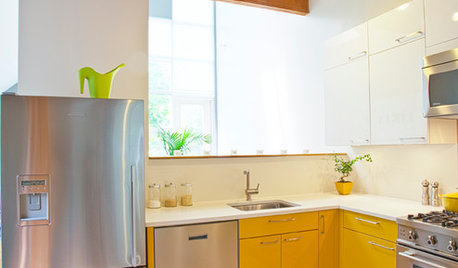
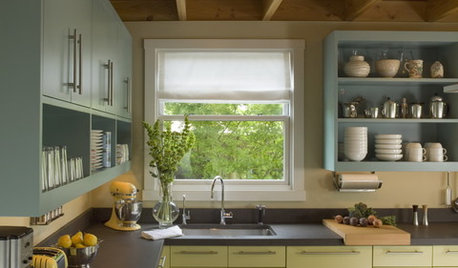
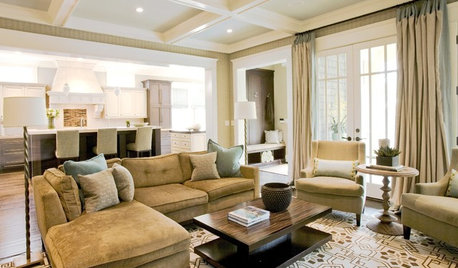


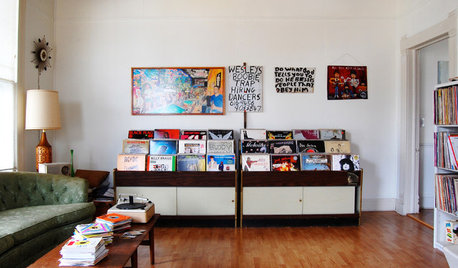
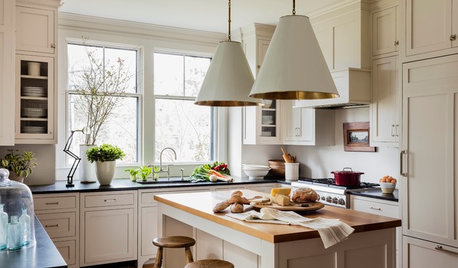
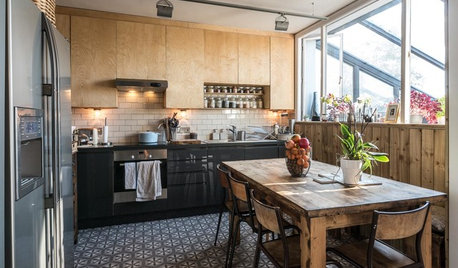
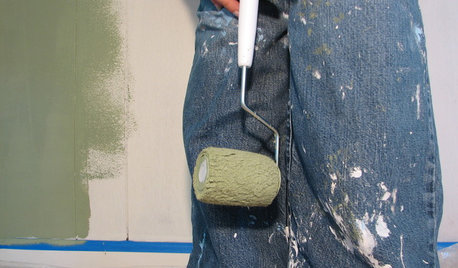
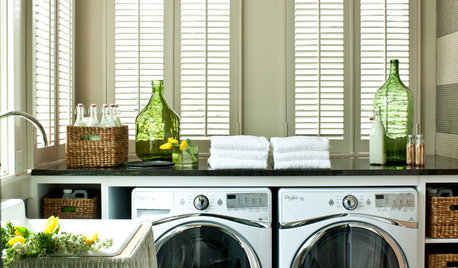






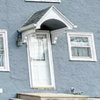


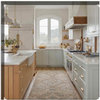
groundbeef1